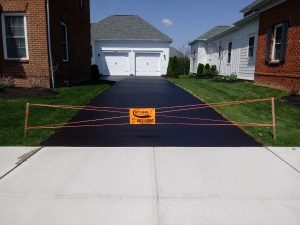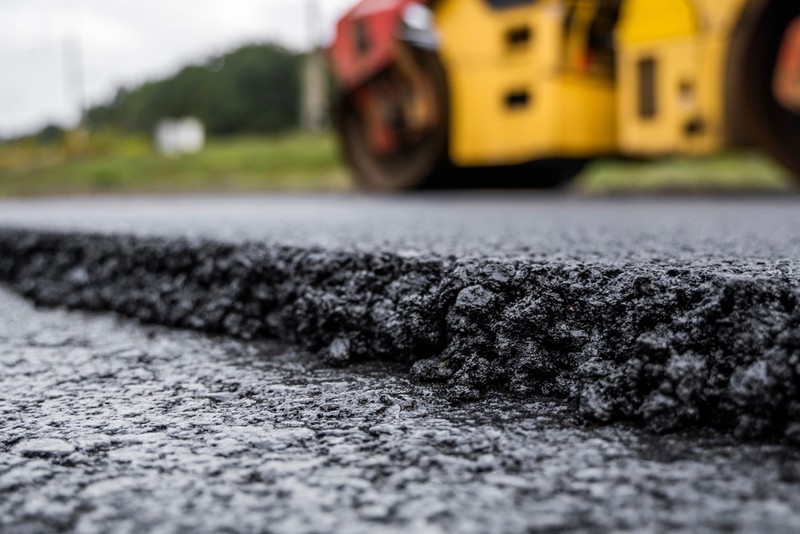Seal in Quality: Professional Solutions for Asphalt Repair and Sealing
Seal in Quality: Professional Solutions for Asphalt Repair and Sealing
Blog Article
Cold Mix Asphalt Vs. Hot Mix Asphalt: Which Is Right for You?

Structure Distinctions
Cold mix and hot mix asphalts differ significantly in their structure, with unique qualities that influence their performance and applications. Cold mix asphalt is created by emulsifying the asphalt binder with water and an emulsifying representative before blending it with accumulation. This method permits the asphalt to be practical at lower temperature levels, making it ideal for momentary fixings and for use in chillier climate condition. Hot mix asphalt, on the other hand, is manufactured at heats, normally in between 300-350 ° F, which helps to attain better compaction and a much more long lasting end product. The warm mix asphalt manufacturing procedure entails warming the accumulation and asphalt binder independently prior to combining them at the asphalt plant.
Furthermore, cold mix asphalt has a tendency to be much less thick and a lot more versatile than warm mix asphalt. This adaptability makes it much better fit for areas with higher levels of movement, such as driveways or roads with rush hour. In contrast, hot mix asphalt is recognized for its high sturdiness and resistance to rutting and splitting, making it a recommended selection for freeways and high-traffic roadways where durability is vital.
Installation Refine Variations
The process of installing cold mix and hot mix asphalt shows remarkable differences in their procedures and demands. Cold mix asphalt, being an extra versatile material, can be applied straight from the bag or container onto the pit or damaged location. It requires minimal preparation job, such as cleaning up the location and condensing the chilly combine with hand tools. This makes it a hassle-free choice for quick and short-term fixes. On the other hand, warm mix asphalt requires a more intricate setup procedure. It entails heating the blend to high temperatures prior to laying it down on a properly ready base. The preparation consists of compacting the base, applying a tack layer, and making use of heavy equipment like pavers and compactors for a smooth and resilient surface. Due to the heating requirements, hot mix asphalt setups are normally performed by experts with specialized read the article devices, making certain a much more irreversible and structurally sound outcome.
Durability and Longevity Elements
When thinking about asphalt choices, longevity and long life are crucial variables to review for long-term sidewalk efficiency,. Hot mix asphalt (HMA) is known for its extraordinary toughness and long life. The heats during the blending and laying process enable much better compaction, causing a denser and more powerful pavement structure. This brings about HMA being more resistant to hefty website traffic tons, extreme climate conditions, and the effects old contrasted to chilly mix asphalt (CMA)
In terms of longevity, HMA generally surpasses CMA as a result of its premium stamina and resistance properties. HMA sidewalks have a longer life span, calling for less constant repair services and maintenance, which can equate to cost financial savings in the future. Additionally, HMA sidewalks are more quickly customizable to fulfill particular task demands, better improving their sturdiness.
Price Considerations
Considering the financial implications is an important element when examining the selection in between warm mix asphalt (HMA) and chilly mix asphalt (CMA) for pavement tasks. While the first price of warm mix asphalt is normally greater than that of cool mix asphalt, HMA often gives an extra economical option in the lengthy run due to its remarkable toughness and durability.
In addition to product expenses, it's essential to take into consideration the expenditures connected with installation and maintenance when contrasting HMA and CMA. Ultimately, the choice between HMA and CMA need to take into account not simply the first cost yet likewise the lasting financial ramifications to establish the most cost-efficient choice for the details pavement job.
Environmental Effect Comparison
Comparison of the ecological influences between warm mix asphalt (HMA) and cold mix asphalt (CMA) reveals unique distinctions in sustainability techniques. HMA production calls for heats, resulting in boosted power usage and greenhouse gas emissions. The process likewise launches unpredictable natural substances (VOCs) and unsafe air pollutants (HAPs) into the ambience. In comparison, CMA is created and applied at lower temperatures, lowering power use and emissions considerably. The reduced production temperatures of CMA lead to reduced fuel consumption and lower levels of CO2 emissions, making it a more eco-friendly choice.
In addition, using CMA usually entails reusing existing asphalt sidewalk, advertising resource conservation and reducing the quantity of waste sent out to garbage dumps. This recycling aspect further improves the sustainability of CMA compared to HMA. In general, when taking into consideration the ecological influence, CMA becomes an extra environmentally sustainable selection due to its lower power demands, reduced emissions, and the possibility for reusing existing materials. By choosing CMA over HMA, roadway building and construction tasks can contribute favorably to environmental preservation initiatives.
Final Thought
In conclusion, the option between chilly mix asphalt (CMA) and warm mix asphalt (HMA) top article depends upon numerous factors such as structure, installation process, durability, durability, expense, and ecological effect. asphalt repair. While CMA provides a affordable and fast solution for minor repair services, HMA makes certain superior toughness and longevity for rush hour locations. Take into consideration these aspects very carefully to figure out which kind of asphalt is the appropriate option for your paving needs

Taking into consideration the financial ramifications is an essential facet when evaluating the option in between hot mix asphalt (HMA) and chilly mix asphalt (CMA) for sidewalk projects. While the preliminary cost of warm mix asphalt is typically higher than that of chilly mix asphalt, HMA often gives a much more economical solution in the long run due to its exceptional durability and durability. asphalt repair.Comparison of the environmental effects in between hot mix asphalt (HMA) and cold mix asphalt (CMA) reveals distinct differences in sustainability methods.In verdict, the choice between cold mix asphalt (CMA) and hot mix asphalt (HMA) like it depends on different elements such as structure, setup procedure, sturdiness, long life, price, and environmental influence
Report this page